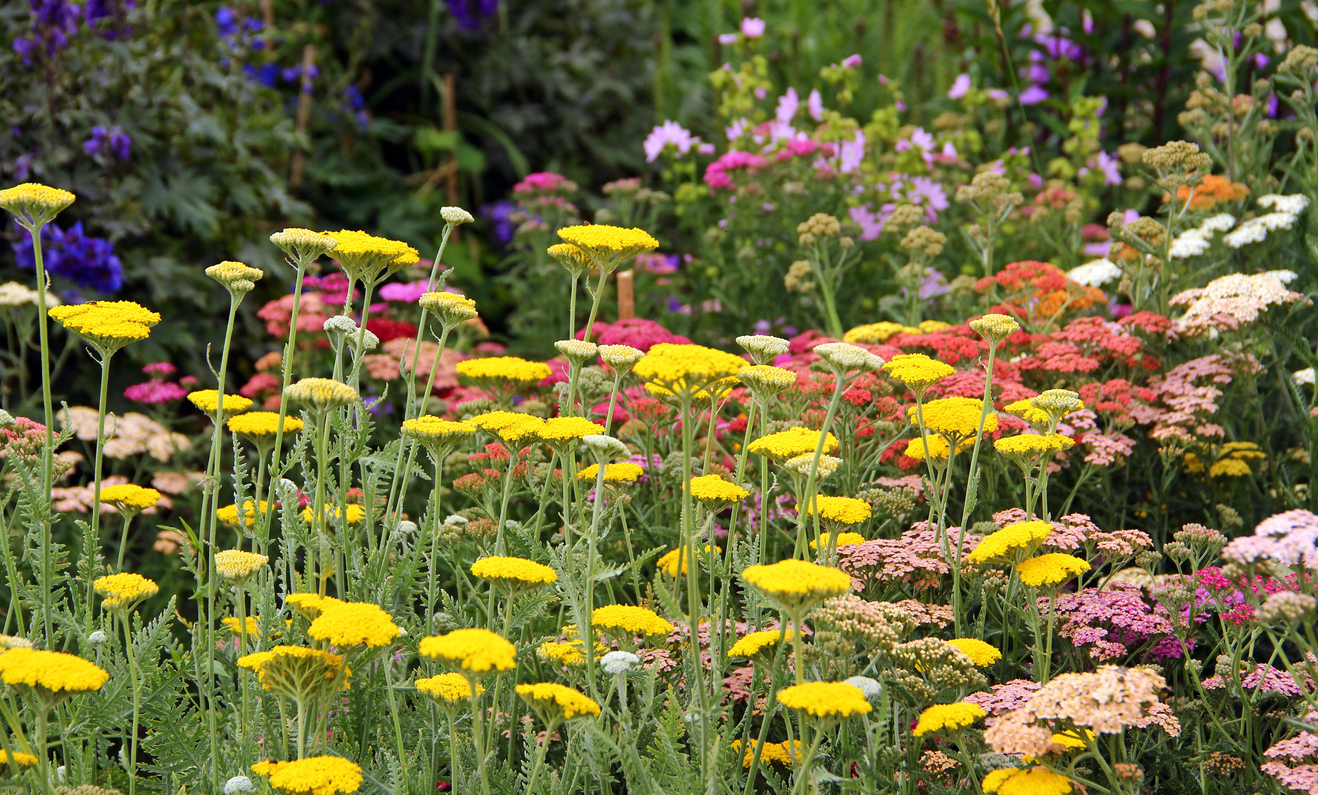We may earn revenue from the products available on this page and participate in affiliate programs. Learn More ›
Ladybugs are known for far more than just their cute shape, size, and color pattern. These winged insects may just be a quarter-inch in size, but they can offer some big benefits when living and dining among your garden plants.
Around the world, there are more than 5,000 species of ladybugs, and these little beetles are often considered good luck. Maybe their reputation for bringing fortune stems from their ability to eat as many as 5,000 insects—many of them unwelcome pests—throughout their lifetime, making ladybugs a welcome guest in most gardens. Here are three reasons to let ladybugs live among your plants.
RELATED: Don’t Kill These 17 Beneficial Insects in Your Garden
1. Ladybugs Eat Unwanted Insects

Both adult ladybugs and their larvae dine on a variety of unwanted garden pests. For example, ladybugs love to feast on aphids, which damage plants by sucking juices from stems and leaves, leaving plants discolored and stunting their growth. A large infestation of aphids can leave a sugary residue which then attracts ants, which in turn causes the growth of fungus on plant surfaces. Ladybugs also eat lace bugs, mealybugs, a variety of beetles, spider mites, and whiteflies, all of which can wreak havoc on your garden plants if left unchecked.
RELATED: 3 Container Garden Combos for Attracting Pollinators
2. Ladybugs are Pollinators

While bees are the workhorses of the pollinator world, ladybugs also do their part to pollinate our plants. Many species of lady beetles enjoy nectar and pollen as part of their diets, and as they travel from flower to flower in search of food, they assist with pollination.
RELATED: 8 Reasons Not to Use Pesticides in Your Yard and Garden
3. Ladybugs are an Alternative to Chemicals

It can be easy to reach for a pesticide when you find unwanted insects such as aphids or spider mites in your garden, but chemicals can also kill beneficial insects. By using ladybugs in your garden to help cut down on unwanted insects, you can keep pests in check using natural, biological controls. Plus, ladybugs are people and pet safe!
RELATED: 12 Ways to Predict the Weather by Watching Nature in Your Backyard
4. How to Naturally Attract Ladybugs

While you can purchase ladybugs and other beneficial critters for your garden, there are also some small things you can do to help make your garden more inviting to them. To attract ladybugs to your garden and get them to stay, you’ll want to make sure they have plenty to eat. Different species of ladybugs have specific food preferences. “Some ladybugs prefer tree aphids, some like rose aphids, some prefer only crucifer (broccoli, cabbage, Brussels sprouts, cauliflower) aphids. Some ladybugs are generalist feeders,” said Amy Dreves, program assistant for the Oregon State University-based statewide Master Gardener Program.
Your best bet for attracting ladybugs to your garden is to grow a variety of plants that work as both food and shelter. Try spearmint, common knotweed, black locust and yarrow. Also, don’t forget to water your garden and spray your plants so ladybugs have something to drink.


